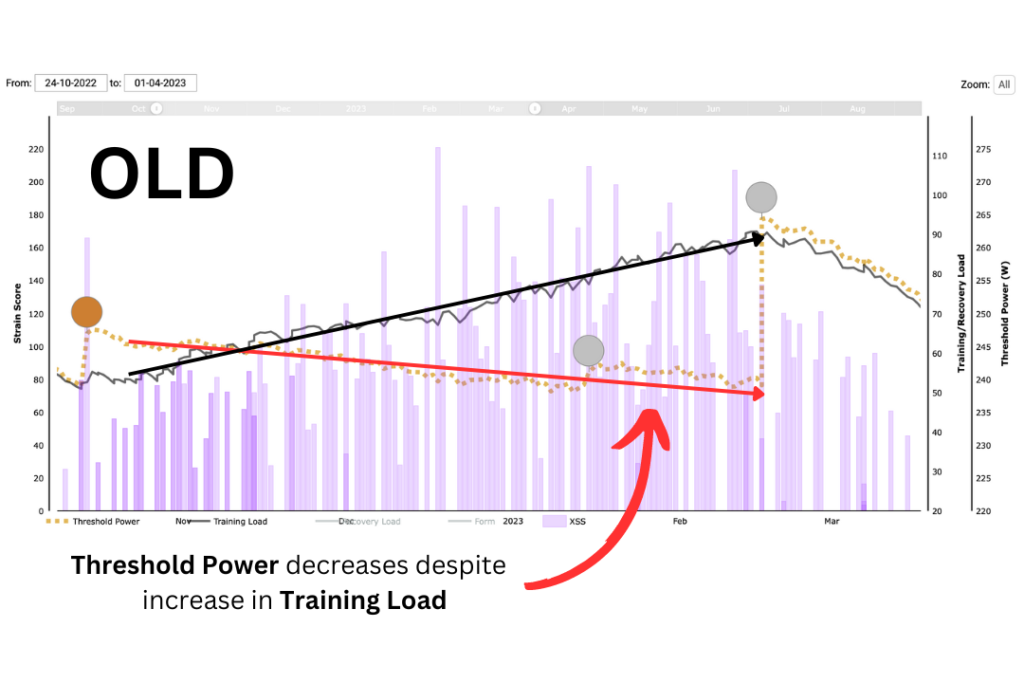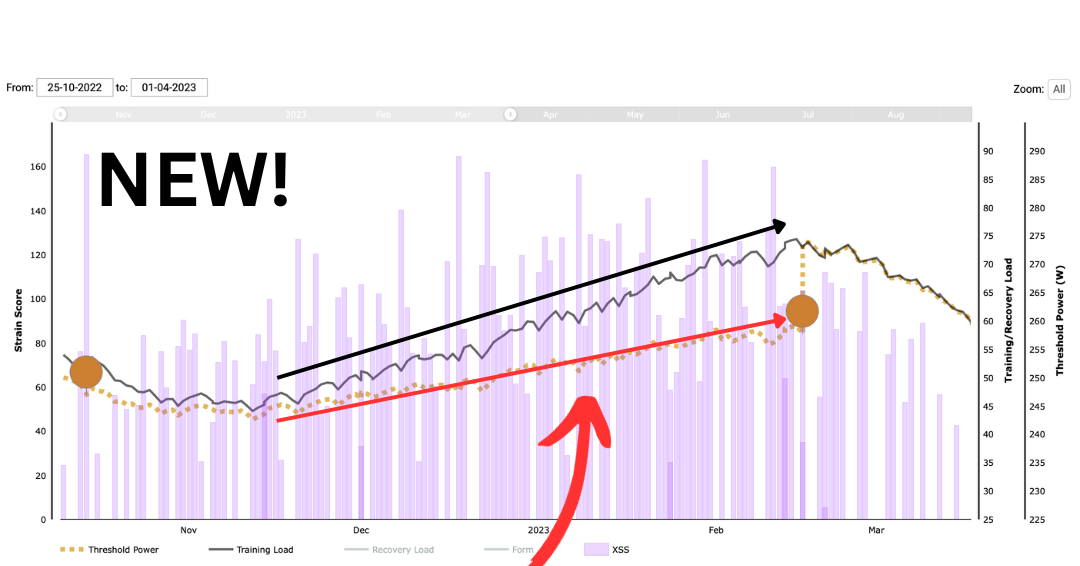Improvements to Fitness Signature Tracking
Xert looks for patterns in your data that are used to help track the changes in your fitness, i.e. your fitness signature. As you exercise, train, race, ride, run, etc, Xert takes the information you gather and it can predict changes in your fitness day-to-day. The system intentionally though leaves a bit of room for fitness breakthroughs, giving you the necessary feedback and provide you assurance you are indeed improving. This “little room” is called signature decay method in Xert and it’s an important aspect that’s needed for you to know you’re improving by getting fitness breakthroughs.
In this release, this method has been improved. It the past, the method would allow the “little room” to grow and grow and sometimes with some users, they’d see an unreasonable decline in fitness during long periods of consistent training. In this release, the decay method has been tuned to better enable athletes to train, see improvments and not worry about changing the decay method.
Most other training platforms will estimate your FTP based on your best efforts (10s power, 20 min power, etc.) over a ~40-90 day window. As you add activities, new maximal efforts are added to the window, or as older efforts fall out of that window, you might see your FTP change. On the other hand, Xert does not calculate your fitness signature by looking at highest average power over certain durations, but rather calculates your fitness signature based on fitness breakthrough efforts. Importantly, because Xert tracks your training strain (XSS) into 3 energy systems – Low (Threshold Power), High (HIE), and Peak (Peak Power), Xert can predict changes in your fitness signature parameters based on changes in your Training Loads, even without maximal/breakthrough efforts.
Curious to learn more about Signature Decay, check out our blog post – here.
In the previous version, signature decay over time could be prevented by switching to the ‘No Decay – Training Load Matched’ setting. However, in this latest update to Xert incorporates aspects of the ‘No Decay – Training Load Matched’ method into all other decay settings. What this means is that rather than allowing your signature parameters to continually decay slowly over time from your last fitness breakthrough, your signature will decay a little, then follow your training loads. This allows the system to more easily detect your next Breakthrough, while simultaneously preventing excessive decay. See the images below to compare the difference in ‘Optimal Decay’ before and after the latest update, using the same activity data:
 Old Decay – Notice that Threshold Power continually trends downward despite an overall increase in total Training Load.
Old Decay – Notice that Threshold Power continually trends downward despite an overall increase in total Training Load.
 New Decay – Notice that Threshold Power now trends with their overall Training Load, but lags slightly below. This allows the system to better track a user’s Threshold Power over time, while still easily detecting new breakthrough performances.
New Decay – Notice that Threshold Power now trends with their overall Training Load, but lags slightly below. This allows the system to better track a user’s Threshold Power over time, while still easily detecting new breakthrough performances.
